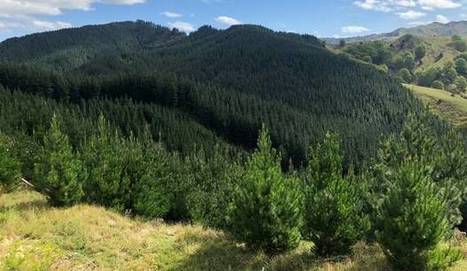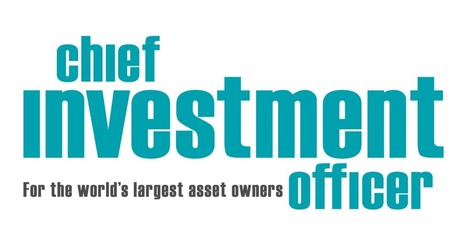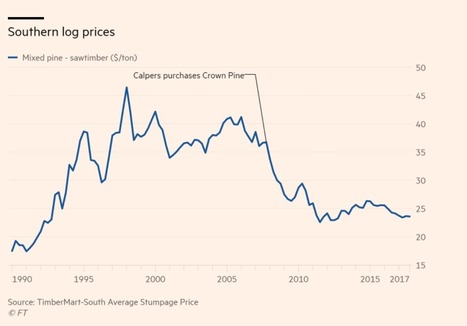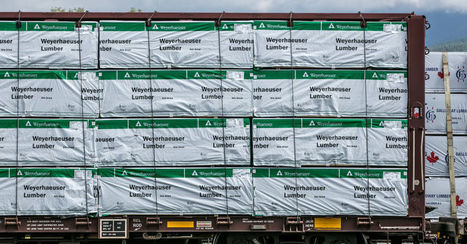Problems at Phaunos Timber (PTF) continue to mount as the specialist investment company faces legal action from a majority shareholder in one of its New Zealand forestry assets.
The distressed portfolio, which recently rejected a takeover from its former manager, has been hit with a legal challenge from Rayonier, the majority shareholder in Matariki Forestry Group.
It has started proceedings at Auckland’s high court over what it alleges is a breach of confidentiality by Phaunos.
The complaint stems from a valuation report on Matariki which was included in a circular Phaunos sent to investors in response to the takeover offer from former manager Stafford Capital Partners, which Phaunos said ‘significantly undervalued’ the company.
Rayonier, which owns 77% of Matariki, said the inclusion of the valuation breached confidentiality and has served an acquisition notice stating that it now had the right to acquire Phaunos' stake in Matariki for NZ$225 million, equivalent to a 20.5% discount to the most recent valuation by the fund.
Get Started for FREE
Sign up with Facebook Sign up with X
I don't have a Facebook or a X account

 Your new post is loading... Your new post is loading...
 Your new post is loading... Your new post is loading...
***
Nova Scotia will maintain a moratorium on long-term leases for timber harvesting on Crown lands until it "digests" a new forest practices review.
The report from University of King's College president Bill Lahey calls for a drastic reduction in harvesting on Crown land and a shift to more cutting on private woodlots. The recommendation poses tough questions for the Liberal government.
It ordered the review in part after persistent complaints that increased harvesting on Crown land in western Nova Scotia drove down demand for wood from private woodlots.
On Thursday, Premier Stephen McNeil and Lands and Forestry Minister Iain Rankin sidestepped any commitment to reduce harvesting on lands owned by the province.
Rankin said the freeze on long-term leases to harvest on Crown land will stay for now. "Until we are fully able to digest the report and each recommendation we are not prepared to sign any long-term leases until we actually consider all those recommendations," Rankin said.
McNeil said an initial response will be delivered this fall. The most recent Crown lease for Pictou-based Northern Pulp expired in July and was renewed for one year.
A renaissance in forestry investment in recent years has largely been driven by increased returns that remain very strong, says Warwick Searle, a specialist forestry broker with Colliers International.
*** Although single-family starts appear to be maintaining a relatively linear upward trend, multi-family starts peaked in mid-2015 and have undulated lower since. As a result, total starts have been increasing along a decelerating trend since 2013. Delphi Advisors provide analytical insights about this topic in Forest2Market’s most recent issue of The Economic Outlook:
A key consultant for the California Public Employees’ Retirement System (CalPERS) has defended the system selling most of its forestland portfolio at a loss estimated to be around $500 million, saying CalPERS assets are better invested in core real estate.
Forestland, real estate, and infrastructure make up the three components of the CalPERS $37.5 billion real assets program, but unlike returns for real estate and infrastructure over the last few years, forestland investments have been a money loser for the system.
Andrew Junkin, president of Wilshire Consulting, who serves as the pension system’s general and forestland consultant, told the CalPERS Investment Committee on August 14 that the recent sale of almost 80% of CalPERS’s $2 billion forestland portfolio was not “a panicked move.”
“I think your [investment] staff spent a lot of time really thinking through the options and finding the best possible solution at this time,” he said. CalPERS sold the portfolio on an unclosed date after the end of the second quarter on June 30.
Junkin said the sale of the forestland portfolio came just before CalPERS would have had to make “a very large principal payment.” He said there had been a recent evaluation of the forestland portfolio’s value, resulting in a markdown. Junkin said even with the markdown, CalPERS officials received a higher price for the sale of the portfolio than the price listed in its valuation report.
Junkin said CalPERS would have had to mark down the portfolio, even if it did not sell the land, based on the evaluation.
CalPERS officials have not disclosed the sale price of the southeastern US timber portfolio or markdown information, but the portfolio was listed as being worth $1.559 billion as of June 30. That number reflects previous markdowns.
CalPERS had paid around $2 billion for the portfolio starting back in 2008, part of then Chief Investment Officer Russell Reed’s plan to help diversity the system’s assets. CalPERS, with more than $352 billion in assets under management, is the largest retirement plan in the US.
CalPERS sources say the pension system lost around $500 million from the sale.
Junkin told the investment committee that the forestland portfolio struggled because of its heavy concentration in the southeast timber market. “Timber prices in the southeast were hit pretty hard in the global financial crisis because that tends to be the market that’s used for home construction,” he said. Junkin said even as home construction recovered, timber prices remained depressed. He said CalPERS’s timing was “poor,” buying the forestland before financial crash, but that “you can’t know in advance that the market’s going to collapse.”
The forestland portfolio was also heavily leveraged, acknowledged Junkin. He has previously said that CalPERS had to harvest trees to pay the debt service on the forestland portfolio. CalPERS officials have not disclosed the level of leverage in the portfolio.
CalPERS data shows that the overall forestland portfolio had a 1.92% return for the one-year period ending June 30, 187 basis points below CalPERS’s forestland benchmark. For the three-year period, the portfolio had a loss of 2.37%, 581 basis points below the benchmark, and for the five-year period, it had a loss of 0.99%, 709 basis points below the benchmark. For the 10-year period, the portfolio saw loss of 1.07%, 513 basis points below the benchmark.
Phaunos Timber Fund issued a letter to shareholders urging them to reject a takeover bid for the company, which is currently in the process of being wound up.
Phaunos had in June announced it received a takeover approach from Stafford Capital Partners, its former fund manager, worth 49 cents per share.
'Stafford's offer undervalues Phaunos,' the company said. 'There is significant upside from the asset realisation process compared to Stafford's offer.'
Phaunos also published an updated asset realisation range of 54-to-60 cents per share.
'This updated range, based on indicative bids received in US dollars, represents a 10% to 22% upside to Stafford's offer,' it said.
Using surveys, satellite images and categorizations from various government agencies, the U.S. Department of Agriculture divides the U.S. into six major types of land. The data can’t be pinpointed to a city block—each square on the map represents 250,000 acres of land. But piecing the data together state-by-state can give a general sense of how U.S. land is used. *** Forestland is the last major category of land categorized by the USDA. Unprotected forests and timberland constitute a quarter of the contiguous U.S.
Interior Secretary Ryan Zinke said climate change had "nothing to do" with California's wildfires, as he visited neighborhoods hard hit by the massive Carr Fire over the weekend.
Massachusetts Pension Reserves Investment Management Board returned a gross 10% in the fiscal year ended June 30, documents from the Boston-based pension system show.
An investment fund managed by The Lyme Timber Company LP (“Lyme”), a private timberland investment manager, has received $20 million in New Markets Tax Credit (NMTC) financing from CEI Capital Management LLC (“CCML”) to help it acquire 118,300 acres of timberlands in the Wyoming, McDowell, Mingo and Logan Counties of West Virginia.
This addition to Lyme’s portfolio is in keeping with the company’s approach to partnering with rural communities and landowners to sustainably manage working forestland with living wages paid to employees, and strategies including recreational leasing, the sale of carbon-offset credits, and restrictions on future commercial or residential development through the sale of working forest conservation easements.
Lyme’s West Virginia forestland purchase qualified for the NMTC program, which was designed by Congress to stimulate private investment and economic growth in low income communities that lack access to capital needed to grow businesses, create jobs, and sustain healthy local economies. The tracts are located in a highly economically distressed area of coal country that cites poverty rates as high as 37.9 percent, and unemployment as high as 14.8 percent.
Importantly, Lyme will work to introduce new worker safety and job quality standards to the local logging industry. Due to its steep and mountainous terrain, West Virginia woodlands are particularly difficult to safely harvest, with loggers using chainsaws on steep slopes, making them susceptible to injury when trees fall or are moved. To address these safety issues, Lyme will focus on bringing “winch-assist” harvesting technology to the region. The technology allows logging crews to operate harvesting machines on slopes that were previously logged by hand. Harvesting machines are tethered by cables to an anchor machine at the top of the slope supporting the harvesting machine to remain upright on the hill and protects workers by moving them inside a safety cab. Harvesting with machines also increases productivity and can create higher paying jobs with better benefits.
Though used in Canada, New Zealand, and the Pacific Northwest, tethered harvesting systems has yet to be used in the eastern US. The flexible financing from CCML via the New Markets Tax Credit (NMTC) program helps make the cost of testing its implementation possible.
The Financial Times reports that CalPERS lost over $400 million on Lincoln Timber, a failed 2008 purchase of $2.38 billion of timberland in the southern part of the US. CalPERS exited the remainder of this investment in June, for $1.39 billion, a loss of $355 million on the purchase price. Combined with losses on disposals of previous portions of this holding, the total loss was over $500 million.
Combined with previous disposals, it appears that total sales of the forestry land netted $1.85bn, leaving Calpers and its partners with a $534m loss before taking into account lumber revenues, inflation, management fees and debt servicing costs.
The article later states that the giant fund paid $52 million in fees. And of course, there were opportunity costs. Again from the pink paper: According to Calpers documents, its return on the investment was a negative 0.5 per cent over 10 years, underperforming its benchmark, the NCREIF Timberland Index, by 497 basis points over that time.
“Leverage has exacerbated cash flow issues,” said a Calpers external audit last year. “Assets that would otherwise have been allowed to grow and appreciate, have been harvested to manage the debt.”
It also appears that CalPERS, as it is sometimes wont to do, timed its sale badly. The Financial Times points out CalPERS was in haste to exit its holdings: After starting 2018 with the seventh-largest holdings of forestry land on the continent, the Texas sale all but takes Calpers out of the asset class.
“They made a decision to get out and they wanted to get out fast,” said Brooks Mendell of Forisk Consulting. “They’ve basically accomplished that objective.
*** In the 1990s, CalPERS had been an early entrant into timberland investing, along with Harvard, and had done well with this investment strategy. JJ Jelincic said the Lincoln investment was intended to be the first of a new program, but that a timber portfolio with holdings only in the South, and nothing in the Pacific Northwest, “made no sense”.
Last November, the U.S. Department of Commerce under President Trump announced an average of 21 percent import duties on Canadian timber products entering the U.S. The announcement was greeted with mixed reactions within the construction industry; builders claimed that the tariffs would increase the cost of construction, and American suppliers argued that the domestic timber industry would benefit, expand, and keep wood prices low.
Single-family home construction in the U.S. relies heavily on Canadian softwood for roofing and framing. In 2017, Canadian lumber yards supplied 28 percent of the U.S. softwood lumber market, and home builders have been the first to raise concerns about the new duties, which were in effect by January.
The National Association of Home Builders (NAHB) claims that the imposed tariffs have added approximately $9,000 to the cost of single-family homes and up to $3,000 on multi-family homes. The NAHB doesn’t believe U.S. domestic production is capable of meeting the current market demand and that the tariffs only hurt native manufactures by forcing them to increase their lumber prices. The NAHB is calling for the Trump administration to resume talks with Canada to secure a more mutually beneficial long-term agreement.
David Logan, director of tax and trade policy analysis at the NAHB, says that historically, the U.S. lumber field has never been able to support rapid housing growth. “Buyers are still buying from the distributors they’ve always sourced from despite the tariffs,” he said. “Domestic lumber production has increased marginally in the last year, but it’s not kept up with the housing demand in terms of percentages, so it’s hard to say that we’re meeting the challenge. This has always been the case. We can’t meet that need…not even close.”
Logan also argued that larger lumber companies in the U.S. are profiting unfairly from the deal, citing the Seattle-based Weyerhaeuser, which owns 12.4 million acres of forest in the U.S. alone and manages 14 million acres in Canada, as well as West Fraser, a Vancouver-based company that operates 48 mills across both countries. The NAHB claims that these companies are able to reap the benefits of both markets under the current trade agreement and likely won’t be affected if things change again. “We don’t think the dialogue will reopen any time soon as long as the North American Free Trade Agreement negotiations are ongoing. If history repeats itself…the last time this happened it took around 5 years to settle,” he said referring to the original SLA. “Hopefully I’m wrong and this is done very quickly. Until then, prices will maybe get a bit higher, but volatility will certainly increase.” |
Brad Heppner has built a new company in Dallas on the idea that as the numbers of U.S. millionaires rise, investors will be looking for more than stock, bonds and mutual funds to grow their nest eggs. But those alternative assets are tied up in investments that are slow to untangle, such as private equity, hedge funds, oil and gas, timber or family businesses. None is as easy to convert into cash as a stock index fund.
So he founded Beneficient Group, which he refers to as BEN, with $2 billion in capital to be a lender to wealthy Americans who need money fast. The company will turn nonliquid assets into cash and return the asset to the borrower once the investment pays back Beneficient. But most investors can’t log on to their 401(k) accounts or IRAs and buy a piece of an office tower or a hedge fund. *** “We’re trying to make the process as simple as possible,” he said, noting that Beneficient boils down what used to take six to nine months and hundreds of pages of legal documents to 45 days and 20 pages of an “easy-to-understand” contract.
Beneficient is repaid by the asset, which is placed in a trust for as long as it takes to have the lender’s principal and interest returned. It may take a couple of years or 10 years.
Heppner has $2 billion to lend to his wealthy customers: 40 percent of that is his own money, about 10 percent is from other investors and board members, and 50 percent he just secured in a transaction with Minneapolis-based GWG Holdings, a firm that buys life insurance policies from individuals. Heppner is confident that his years of groundwork on Beneficient will make it work. But he says matter-of-factly that Beneficient may not have enough capital to satisfy demand. “We can’t get our head around it.”
On the other side of that question, there could be another financial crisis that wipes out the portfolios of the nation’s wealthy. The number of U.S. millionaires fell by more than one-third in the 2008 financial meltdown.
“That would set us back 10 years,” he said.
Faced with the worst summer fire season in 10 years, Gov. Jerry Brown is proposing broad new changes to California’s logging rules that would allow landowners to cut larger trees and build temporary roads without obtaining a permit as a way to thin more forests across the state.
Timberlands company Weyerhaeuser Co. WY +0.00% said Monday that Chief Executive Doyle Simons intends to retire.
Weyerhaeuser said its board has chosen Devin Stockfish, currently senior vice president of timberlands at the company, to take over as CEO at the start of 2019. Mr. Simons will be an adviser to the company until April 1 and will leave the board when Mr. Stockfish becomes CEO, the company said.
Mr. Simons has been on the company’s board since June 2012 and has been president and CEO since August 2013.
Weyerhaeuser said the head of its wood-products business, Adrian Blocker, will become timberlands senior vice president in 2019. Keith O’Rear, who runs sales and marketing for the wood-products division, will become senior vice president of wood products in 2019.
Keweenaw Land Association, Limited (kewl:OTC Pink(R)) today reported financial and operating results for the three months ended June 30, 2018. Revenue from timber operations and real estate development increased by 14.3% year over year from $1.671 million in the second quarter of 2017 to $1.910 million in 2018. EBITDA before extraordinary expense decreased from essentially breakeven in the second quarter of 2017 to negative $0.340 million in 2018. Comprehensive net loss of $1.877 million in the quarter also included a nonrecurring charge of $1.283 million related to severance agreements, retention payments, and legal fees. *** While we expect the review and approval process to be routine, and a possible completion of the sale in the first quarter of 2019, regulatory processes are inherently unpredictable. There can be no assurance that such closing will actually occur.
However, as the Board has delved deeper into the benefits and disadvantages of becoming a REIT, alternatives have been raised involving structuring, sequencing and timing that were not previously considered. The Board is working with legal and tax counsel to explore these issues further to determine whether to convert to a REIT for the 2018 tax year, defer the election until next year, or abandon the conversion entirely.
In the company's first Pacific Northwest transaction, CatchMark Timber Trust, Inc. announced today an agreement to acquire 18,063 acres of prime Oregon timberlands for $88.8 million from Forest Investment Associates (FIA). The to-be-acquired timberlands — known as the Bandon Property — are strategically situated within the Douglas fir/western hemlock zone between the Coos Bay markets and Roseburg mills approximately 150 miles southwest of Portland.
Separately, CatchMark announced an agreement to sell 56,000 acres of timberlands in Texas and Louisiana — the Southwest Region — to FIA for $78.5 million. CatchMark will retain approximately 370,000 tons of merchantable inventory (52% sawtimber/48% pulpwood) to be harvested over the next 18-24 months. The per-acre sales price is $1,533 when including the timber reservations. *** Bandon features the high-quality stocking characteristics and sustainability attributes CatchMark seeks in expanding its timberland investments:
*** The Southwest Region portfolio, located across several counties in East Texas and western Louisiana, was acquired by CatchMark in four separate transactions during 2014 and 2015. The property is comprised of 79% pine and 21% hardwood by acres and 1.8 million tons of merchantable inventory, consisting of 51% sawtimber and 49% pulpwood. After accounting for the timber reservation, the completed disposition would decrease the company's average annual harvest volume by approximately 134,000 tons over the next five years.
Huge swathes of the Highlands are being put up for sale in what is said to be evidence of a massive boom in multi-million-pound timber industry. Forestry director Patrick Porteous revealed sellers were attempting to cash in on a buoyant market, while buyers were keen to reap the rewards of a growing industry – worth about £1 billion in the last year to the Scottish economy and employing more than 25,000 people.
He revealed developers were also desperately hunting precious available land to start up new plantations and take advantage of rising timber prices.
Mr Porteous said a number of landowners who have had woodlands for some time had decided to sell up while the market was at an all-time high.
He added: “Mills across the north are working to capacity to cope with demand, and we have just seen Norbord near Inverness undergo a major expansion.
“Timber prices have gone up substantially in the last year, and it is a very buoyant market. It is a good time to be harvesting and selling and buying.”
On August 8, China's Commerce Ministry released a preliminary list of proposed tariffs on $16 billion in US goods, which came just a day after the U.S. Trade Representative's office released a finalized list of $16 billion in Chinese goods that will be hit with tariffs.
After jumping 11 percent in May, housing starts dropped 12 percent in June to a seasonally adjusted annual rate (SAAR) of 1,173,000 units. Single-family starts accounted for 858,000 units, which is 9.1 percent below the revised May figure of 944,000. Starts for the volatile multi-family housing segment plunged 19.8 percent to a rate of 315,000 units in June; starts for buildings with five or more units fell to a 10-month low.
British Columbia Investment Management Corp (BCI), Public Sector Pension Investment Board (PSP Investments) and Alberta Investment Management Corp (AIMCo) have agreed to affiliate their timber investments. The agreement will see TimberWest Forest Corp and Island Timberlands LP, both Canadian timberland companies, share facilities and services, align best practices and work together to enhance forest stewardship. They will continue to operate independently. BCI and AIMCo have backed Island Timberlands since 2005. BCI and PSP Investments acquired TimberWest in 2011.
The California Public Employees’ Retirement System (CalPERS), the largest US public pension plan, has sold most of its poorly performing forestland portfolio, a consultant’s [Wilshire Associates] review of the program shows. *** CalPERS took a double hit with the sale of the $1.559 billion portfolio, consisting of forestland in eastern Texas and western Louisiana, selling the portfolio at a loss after poor long-term investment results.
CalPERS had purchased the timber portfolio sold last month starting back in 2008, paying around $2 billion as part of then-Chief Investment Officer Russell Reed’s efforts to diversify the system’s portfolio and invest in sustainability-oriented strategies. *** Wilshire went on to say that challenges of the investment included “onerous debt arrangements,” and “unfavorable supply arrangements.” It also noted depressed timber market pricing. CalPERS officials were not immediately available for comment, but it is their policy not to comment on upcoming board agenda material.
The Wilshire report did not detail the exact amount of the loss CalPERS incurred in the sale or who was the purchaser. One source said CalPERS lost approximately $500 million from the sale.
CalPERS data shows that the Crown Pine Timber portfolio made up almost 80% of the value of the plan’s timber portfolio. The remaining two portfolios, one valued at $425 million, and another valued at $2 million, are also for sale, sources say.
CalPERS does break down specific investment returns for the Crown Timber Portfolio. But CalPERS data shows that investment results for the Crown Timber portfolio, and a second unrelated smaller timber tract combined, produced a negative 4.2% return in the three-year period ending June 30 and a negative 1.4% return for the five- year period, also ending June 30.
In his first remarks on the vast California wildfires that have killed at least seven people and forced thousands to flee, President Trump blamed the blazes on the state’s environmental policies and inaccurately claimed that water that could be used to fight the fires was “foolishly being diverted into the Pacific Ocean.”
State officials and firefighting experts dismissed the president’s comments, which he posted on Twitter. “We have plenty of water to fight these wildfires, but let’s be clear: It’s our changing climate that is leading to more severe and destructive fires,” said Daniel Berlant, assistant deputy director of Cal Fire, the state’s fire agency.
He and others said that Mr. Trump appeared to be referring to a perennial and unrelated water dispute in California between farmers and environmentalists. Farmers have long argued for more water to be allocated to irrigating crops, while environmentalists counter that the state’s rivers would suffer and fish stocks would die.
The president first addressed the fires late Sunday, writing on Twitter, “California wildfires are being magnified & made so much worse by the bad environmental laws which aren’t allowing massive amount of readily available water to be properly utilized.” He also referred to a debate in forest management about the effectiveness of removing trees and vegetation as a fire control method.
That debate has no bearing on the availability of water for firefighting. Helicopters lower buckets into lakes and ponds to collect water that is then used to douse wildfires, and there is no shortage of water to do so, Cal Fire officials said.
The timber industry has argued that “thinning” forests — removing certain trees to improve the health of the remaining ones and diminish the plants and underbrush that fuel fires — reduces the risk of wildfires. Republicans in Congress have sought to loosen environmental restrictions to allow more thinning. Democrats and environmentalists argue the practice will open the door to expanded commercial logging and threaten wildlife.
Michael F. Wehner, a senior staff scientist at Lawrence Berkeley National Laboratory, said it was not possible to quantify precisely the likelihood that climate change is having an impact on forest fires, as can now be done with other extreme-weather events such as heat waves.
And, he said, it’s not easy to weigh how much of the problem can be laid at the feet of forest-management practices. *** California fire officials on Monday said the Carr Fire in Shasta County had ravaged more than 160,000 acres while the Mendocino Complex fires grew overnight and had charred more than 273,000 acres across Mendocino, Lake and Colusa counties.
Who Will Own the Forest? 14 is a 2.5 day event, beginning with an evening reception on September 25, conference sessions and evening reception on September 26, and conference sessions on September 27.Wednesday, September 26, 2018
Thursday, September 27, 2018
Prentiss & Carlisle's insight:
Looking forward to participating as a speaker and seeing old friends again at this granddaddy of timber investment events. |






























